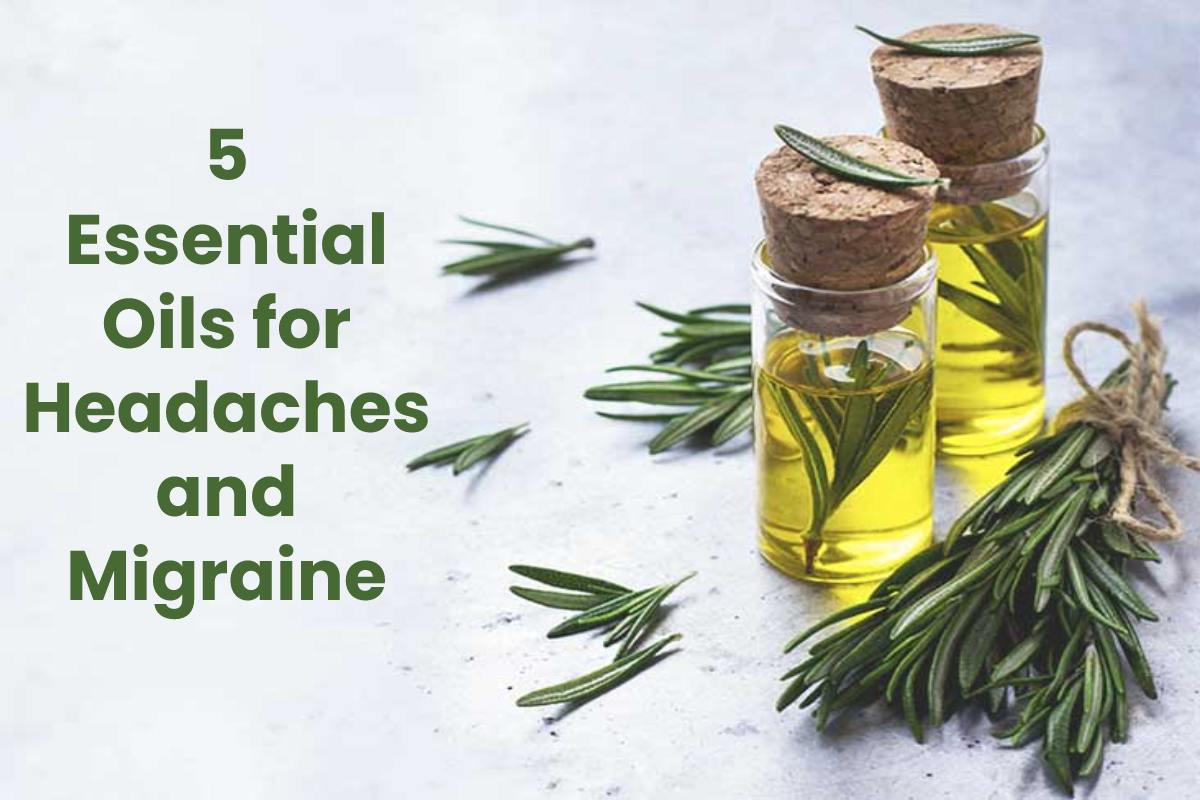Table of Contents
Oils for Headaches and Migraine
Essential oils are vastly concentrated liquids made from leaves, stems, flowers, bark, roots, and other plant elements. Aromatherapy often includes essential oils that can offer health benefits such as reducing stress and improving circulation through sensory (aroma) stimulation.
Essential oils can often help treat certain conditions such as headaches or migraines. They also assist without the long list of side effects that can accompany prescription headache and migraine medications. Different oils offer different benefits.
Approximately essential oils can reduce stress, which can ease tension headaches or reduce pain.
Before use, essential oils must remain diluted in a base oil such as coconut oil, sweet almond oil, or jojoba oil. Essential oils should never be applied directly to the skin or ingested. Add five drops of your favorite essential oil to 1 ounce of carrier oil.
1. Peppermint oil
Peppermint oil is one of the utmost commonly used essential oils to relieve headaches and migraine attacks. It holds menthol, which can help relax muscles and relieve pain.
Applying diluted peppermint oil is believed to help relieve tension headaches and migraine attacks.
How to use it
Dilute the peppermint with another base oil, such as coconut oil, and apply it to the temples.
2. Rosemary oil
Rosemary oil has potent anti-inflammatory and analgesic (pain reliever) properties. It has been used in folk medicine for hundreds of years to reduce stress, relieve pain, and improve circulation, which can help relieve headaches.
A 2013 study even originate that rosemary oil and other medications helped with withdrawal symptoms in addiction treatment programs. It also helped shrink insomnia and relax muscles, which can relieve headaches.
How to use it
The scent of rosemary oil. Like breathing in the smell on your skin or in hot bath, it remains also believed in providing pain relief. To use rosemary oil, massage the pretentious area with a few drops of rosemary oil mixed with a base oil such as coconut oil.
3. Lavender oil
Lavender essential oil remains commonly used for stress relief and relaxation. There is also a vital sign that lavender can help treat headaches and migraines.
Breathing in the fragrance of lavender essential oil can help control migraine attacks. A 2013 study found that people reported a significant decrease in pain after just 15 minutes of inhaling lavender oil.
How to use it
You can put on diluted lavender oil to your skin, use an oil diffuser, or add diluted oil to a warm bath to get its benefits.
4. Chamomile oil
Chamomile essential oil relaxes the body and muscles, and for this reason, it can be of great help in treating tension headaches. It also helps treat anxiety and insomnia, common causes of headaches.
Pregnant women should not use chamomile essential oil as it transmits a hazard of miscarriage.
How to use it
You can enhance a few droplets of chamomile essential oil diluted in a base oil to a hot bath or water and inhale the steam.
5. Eucalyptus
If sinus problems cause your headaches, eucalyptus essential oil can become your new best friend. This oil will open the nasal passages, clear them, and help relieve sinus tension that causes headaches.
A 2015 study also found that combining peppermint oil, eucalyptus oil, and ethanol provided relaxing effects for the muscles and the mind, which may help relieve headaches.
How to use it
You can add a drop of eucalyptus oil to a carrier oil and apply it to your chest to help clear your sinuses, or add a few drops to hot water and breathe in the steam.
Risks and complications
Essential oils are generally considered safe and may have far fewer side effects than most traditional migraine and headache medications, including prescription and over-the-counter (OTC) medications.
The most significant risk related to essential oils is an allergic reaction or irritation. Applying oils to the skin can irritate, including an itching or burning sensation, redness, or a rash.
You must dilute all essential oils, including peppermint and eucalyptus oils, with a base oil before applying it to the skin.
To prevent irritation from spreading, test a small area. Apply a few droplets of diluted essential oil to a small area on your skin before applying a significant amount. It is safe to use if there is no reaction in 24 to 48 hours.
Very few essential oils are recommended for children under one year of age or pregnant or lactating women. Rosemary and lavender oils, in particular, can be dangerous.
Essential oils can also cause complications if you have pre-existing conditions like asthma or heart problems. Ask your doctor before using any essential oil to ensure it won’t aggravate any existing health problems.
It is important to remember that the US Food and Drug Administration (FDA) does not control essential oils’ purity, quality, or safety. When buying essential oils, be sure to buy from a reputable company.
Conclusion
Essential oils can have several medical benefits when used correctly and help relieve headaches and migraine attacks. When it comes to essential oils, remember that just a little bit goes a long way – one to three drops will do the trick.
If your headaches or migraine attacks are persistent and interfere with your life, make an appointment to see your doctor. For severe or frequent headaches or migraine attacks, essential oils may work best to add-on treatment to prescription medications.
Related Searches
essential oils for migraine headaches
essential oils for migraines recipes
migraine essential oil mix
essential oils for tension headaches
how to use essential oils for headaches
essential oils migraine bomb
essential oils for sinus headache

